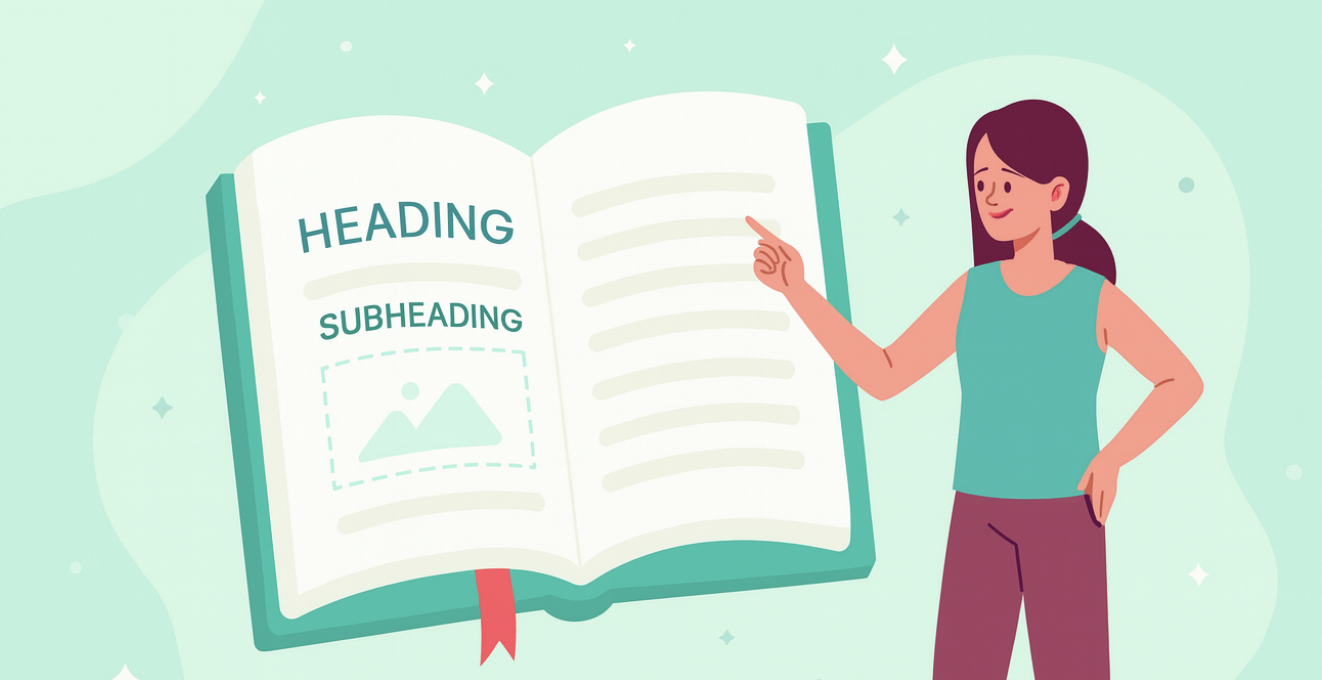Ever tried assembling IKEA furniture without the manual? You’ve got 46 oddly shaped pieces, 22 screws, and a growing sense of doom. That’s exactly what writing feels like without text structure—confusing, chaotic, and likely to collapse under the weight of its own ambition.
So, what is text structure? Simply put, it’s the framework that holds your writing together. It’s how ideas are arranged, how information flows, and how readers make sense of what you’re trying to say. It’s the difference between a clear, compelling argument—and a brain fog-inducing mess of words.
Whether you’re a student writing an essay, a blogger drafting your next viral post, or a novelist building an emotional journey, understanding structure isn’t just helpful—it’s essential. Think of it as your behind-the-scenes superpower. You might have dazzling ideas and killer wordplay, but without structure, your content risks wandering aimlessly like a tourist without Google Maps.In this guide, we’ll break down the types of text structure you’re most likely to encounter (and use), complete with real-life examples and tips to keep your writing crisp, clear, and impossible to ignore. By the end, you’ll know how to build pieces that don’t just look good on the page—they work. Ready to upgrade your writing toolkit? Let’s dive in.
So… What Does Text Structure Mean, Exactly?
So, what does text structure mean? In short, it’s the way a piece of writing is organized—the blueprint behind the words. It’s how your ideas are stacked, sequenced, and served to the reader. While tone is the mood of your writing, voice is your unique personality on the page, and style is how you dress it all up—structure is the foundation. No matter how witty your voice or elegant your style, without structure, your writing is a stylish house built on sand.
Think of text structure as the skeleton under your literary skin. You don’t always see it, but it’s what keeps everything upright and moving in the right direction. Or better yet, imagine it as your reader’s GPS system. A solid structure ensures they don’t get lost somewhere between your introduction and that brilliant conclusion you’ve been saving.
Whether you’re explaining, persuading, describing, or narrating, the structure you choose guides the reader’s experience. It’s how you say what you say—so they actually get it. And now that you know what it means, it’s time to meet the main types and see how each one shapes your message. I promise, they’re more fun than you’d think.

The Big 5: Types of Text Structure You Need to Know
Ready to stop freestyling and start structuring like a pro? Let’s break down the five main types of text structure every writer should have in their toolkit. Each one serves a different purpose, and knowing when (and how) to use them can elevate your writing from meh to memorable. With plenty of text structure examples and a few laughs along the way, here’s your crash course.
Chronological Chaos (Until It’s Not)
Chronological structure is the OG of text organization. It presents events in the order they happened—first this, then that, and finally… ta-da! It’s a go-to for stories, memoirs, history essays, and even IKEA instructions (assuming you actually follow them).
Think fairy tales: “Once upon a time, a girl wandered into the woods, met a bear, and ran home screaming.” Boom—chronological. It’s also what powers timelines, biographies, and process how-tos: “Step 1: Boil water. Step 2: Forget you were boiling water. Step 3: Order takeout.”
This type of structure is perfect when sequence matters. Just don’t mix up your timeline—unless you’re writing a time-travel novel, in which case… good luck.
Tip: One of the most common types of text structure used in narratives and instructions is chronological order.
Cause and Effect: When A Leads to B (and Sometimes Z)
In the cause and effect structure, one thing happens because of something else. It’s the literary equivalent of karma. This structure shines in science reports, history books, and essays that love to say, “X happened, and here’s why.”
Take a case study: “Social media usage increased among teens. As a result, attention spans decreased faster than a dropped Wi-Fi signal.” Or history: “The Boston Tea Party led to a whole lot of angry Brits and eventually, the American Revolution.”
This format helps readers connect the dots between events and outcomes—and it’s particularly satisfying when you’re explaining complex systems or showing how small changes snowball into big ones.
Tip: This text structure example is ideal for unpacking real-world consequences.
Compare and Contrast: Spot the Difference (Like a Pro)
Coke vs. Pepsi. Cats vs. dogs. Batman vs. Iron Man. Compare and contrast is your best friend when you need to explore similarities and differences between two things.
You’ll often find this structure in reviews, essays, debates, or any writing that involves decision-making. For example:
“While Coke has a sharper bite and iconic branding, Pepsi is sweeter and often wins blind taste tests. Choose your sugar high wisely.”
It’s also a favorite in academic writing (“Democracy vs. Autocracy”) and consumer guides (“Android vs. iPhone”). This structure keeps your ideas organized and lets readers evaluate both sides before choosing their champion.
Tip: Among the most versatile types of text structure, compare and contrast works wonders in analytical pieces.
Problem and Solution: The Writer’s Fix-It Format
This one’s simple: Here’s the issue. Here’s how to fix it. It’s the duct tape of writing structures—and it holds up everything from opinion columns to startup pitches.
Example:
“Too many people don’t read books anymore. Solution? Make them shorter, prettier, and give them catchy titles like this one.”
Or:
“Plastic waste is choking oceans. Solution? Ban straws, eat seaweed-based packaging, and save the turtles.”
Editorials, grant proposals, TED Talks—they all love this approach. And yes, infomercials may be cheesy, but their structure is tight:
“Do you struggle with regular sponges? Meet the SpongeX9000!”
Tip: This is one of the clearest and most persuasive text structure examples out there.
Descriptive: Painting with Paragraphs
This structure doesn’t care about time, comparison, or cause. It just wants you to see, smell, and feel something. Descriptive text structure creates vivid scenes through sensory details and juicy language.
Take this line: “The sun dipped low, splashing honey-colored light across the cracked pavement and peeling paint of the old corner shop.”
You’re not moving forward in time—you’re soaking in a moment.
Perfect for poetry, nature writing, character sketches, or moody Instagram captions. The trick is choosing the right details and slowing things down. When done right, it feels like a painting made of words.
Tip: Among all text structure types, descriptive writing is the most immersive—and often the most beautiful.
These five types of text structure are your secret weapons. Use them wisely, mix them when needed, and watch your writing transform from scrambled to structured—with style.
Bonus Round: Mixed Structures & Genre-Savvy Flexibility
Once you’ve got the basics down, it’s time to get a little wild—in the best possible way. Some of the most engaging writing doesn’t stick to just one type of text structure. Instead, it mixes and matches like a literary smoothie, blending elements to suit the purpose, audience, and genre.
Take a journalistic feature: it might start with a vivid descriptive anecdote, then shift into chronological reporting of events, throw in a bit of cause and effect, and close with a problem and solution outlook. Or consider a blog post that opens with a relatable story (chronological), compares two viewpoints (compare and contrast), and then offers takeaways (problem and solution).
This hybrid approach makes your writing more dynamic, flexible, and tailored. Once you understand the rules, you can bend them with confidence—and that’s where real creativity kicks in.
So yes, structure matters. But so does knowing when to break the mold. Master the types of text structure, and then don’t be afraid to remix them like a DJ with a deadline.
Your Publishing Journey Awaits – Start NowWhy Your Structure May Be Failing You (And How to Fix It)
You’ve got great ideas, clever sentences, and a killer opening line… so why does your writing still feel like a chaotic scavenger hunt? Chances are, your text structure is quietly sabotaging you.
Let’s diagnose a few common offenders:
- The Paragraph Jumpscare – where one idea ends and the next slams in with no warning. It’s like switching TV channels mid-sentence.
- The Endless Loop – you keep circling the same point like a GPS stuck in reroute mode.
- The Vanishing Point – your piece starts strong, then drifts into the fog with no clear destination. (RIP, conclusion.)
The fix? It starts with a solid outline. Before you write, sketch your structure: What’s the goal? What’s the best format—chronological, compare and contrast, problem-solution?
Use clear transitions to guide your reader, and after drafting, reverse-engineer your piece: identify what structure it follows. If you can’t find one, your reader won’t either.
The payoff? Writing that clicks. Readers will stay engaged, your points will land, and your words will actually mean something. Good structure isn’t about rules—it’s about clarity, confidence, and being understood, because no one reads an “endless loop” on purpose.
Examples: Text Structure in Action
Let’s take text structure out of theory and into the wild. Here are some bite-sized text structure examples from familiar sources—proof that good structure isn’t just for textbooks.
➤ Chronological (Memoir/Storytelling):
“I was born on a cold January morning. By age ten, I had broken three bones and stolen one goat.”
—Sounds like the beginning of a memoir? That’s chronological structure doing its thing—moving through time, beat by beat.
➤ Cause and Effect (News Article):
“After heavy rainfall drenched the region, local rivers overflowed, forcing hundreds to evacuate.”
—Classic cause and effect: rain caused flooding, flooding caused evacuation.
➤ Compare and Contrast (Essay):
“While ebooks offer portability and convenience, physical books provide a tactile reading experience many still crave.”
—A side-by-side analysis built for bookworms and Kindle converts alike.
➤ Problem and Solution (Op-Ed):
“America faces a rising student debt crisis. One answer: tuition-free community college.”
—Here’s the problem, here’s a potential fix.
➤ Descriptive (Fiction):
“The sky bruised purple as dusk fell, and the streetlights flickered like tired eyes.”
—All mood, all detail—this is the power of description.
Want to level up your writing? Start reverse-engineering your favorite reads. Spot the structure, steal the strategy, and build better stories.
Structure Like a Pro (and Have Fun Doing It)
Let’s do a quick recap: we covered the five main types of text structure—Chronological, Cause and Effect, Compare and Contrast, Problem and Solution, and Descriptive. Each one has its strengths, and each one helps your writing connect, clarify, and click.
The big takeaway? Structure doesn’t box you in—it sets you free. It gives your ideas shape, your readers direction, and your writing the impact it deserves. Once you know how to use these patterns, the blank page starts feeling a whole lot less intimidating.
So whether you’re telling a story, making a case, or painting a scene with words, keep this in mind:
Structure isn’t a cage—it’s scaffolding for creativity.
Now go out there and build something brilliant. Just maybe keep the IKEA manual nearby… you know, for inspiration.
FAQs – Text Structure
Q1: How can I identify text structure?
Start by asking: What is the writer trying to do here? Are they telling a story (chronological)? Explaining why something happened (cause and effect)? Comparing options (compare and contrast)? Solving a problem (problem and solution)? Or painting a picture (descriptive)? Look for signal words, like “first,” “because,” “unlike,” or “as a result.” Reading with this lens makes it easier to spot the structure—and borrow it for your own writing.
If you;’re struggling, you can always look into working with a writing coach, who will help you through the process of writing.
Q2: What is the best text structure?
There’s no one-size-fits-all answer (sorry, no magic formula). The “best” structure depends on your goal. Want to entertain? Try chronological or descriptive. Need to explain a concept or persuade someone? Problem and solution or compare and contrast may work best. The key is to match your structure to your purpose—then the structure works for you, not against you.
Q3: What is a main text structure?
A main text structure refers to the dominant organizational pattern used in a piece. Even if multiple structures are present, one usually leads the way. For example, a blog post might weave in contrast and description, but if it’s built around solving a problem, problem and solution is the main structure. Think of it as the skeleton, while the others are decorative muscles.
Q4: What are the four main structural parts of a story?
In storytelling, structure usually breaks down into four major parts:
- Introduction (or Setup) – Meet the characters and world.
- Rising Action – Tension builds, stakes increase.
- Climax – The big turning point.
- Resolution – Loose ends tied up (or artfully left dangling).
This is the classic narrative arc—simple, satisfying, and wildly effective.
Q5: Can I mix different text structures in one piece?
Absolutely! Many great essays, features, and blog posts blend structures for clarity and flow. Just make sure the transitions are smooth and the dominant structure stays clear—like a good DJ remixing multiple tracks into one killer set.
Q6: Why does text structure matter for SEO and readability?
Because humans—and search engines—love organized content. Clear structure improves readability, keeps visitors engaged, and helps Google understand your page’s purpose. Want more clicks, longer reads, and better rankings? Nail your structure.








